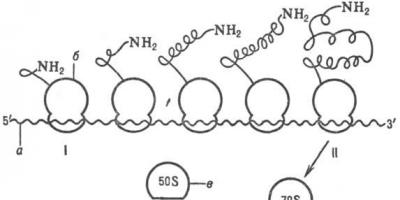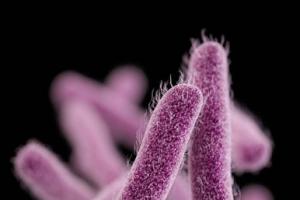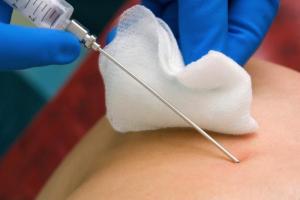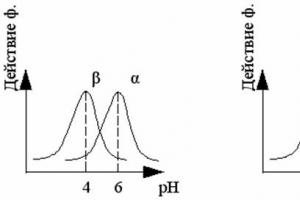1. Definition of obstetrics. Stages of development of obstetrics. Obstetrics in primitive society.
2. Obstetrics in the Middle Ages. Development of obstetrics in the Middle Ages.
3. Obstetrics in the 17th century. Nils Stensen. Louise Bourgeois. Francois Morisot. Hendrik van Deventer. Chamberlain.
4. Obstetrics in the 18th century. Andre Levret. Jean Louis Bodeloc. William Smellie. Johann Georg Roederer.
5. Obstetrics in the 19th century. F.Y. Major. K.M. Baer. M. Duncan. G. Leopold. Litzman. Michaelis.
6. History of obstetrics in Russia. P.3. Kondoidy. I.F. Erasmus. N.M. Maksimovic-Ambodik. V.M. Richter. IN AND. Koch. A.P. Matveev.
7. A.A. Keeter. AND I. Krassovsky. N.N. Phenomena. B.C. Gruzdev. BEFORE. Ott. I.P. Lazarevich. N.I. Pobedinsky. M.S. Malinovsky.
8. V.V. Stroganov. K.K. Skrobansky. K.N. Zhmakin. Tsovyanov. IN AND. Bodyazhin. L.S. Persian. People's Commissar of Health.
History of obstetrics in Russia. P.3. Kondoidy. I.F. Erasmus. N.M. Maksimovic-Ambodik. V.M. Richter. IN AND. Koch. A.P. Matveev.
History of obstetrics in Russia. For a long time in Russia, obstetric care was provided by midwives. From the second half of the 17th century, especially from the time of Peter the Great, a large number of foreign doctors with doctoral diplomas from well-known Western universities appeared in Russia. These doctors served not only the royal family, as was the case in pre-Petrine times, but also many rich people.
In 1707, by decree of Peter I, a Hospital School was created at the General Hospital in Moscow in the German Settlement. The hospital school was the first higher medical educational institution in Russia, which did a lot for the development of medicine in our country.
The need for reforms in medical education and obstetric care was well recognized in Russia. The reforms were developed by the director of the Medical Chancellery, Pavel Zakharovich Kondoidi, and implemented during the reign of Elizabeth Petrovna and Catherine P. P.3. Kondoidi drew up a determination of the medical office on the establishment and organization of schools for women's affairs (as obstetrics was then called) in Moscow and St. Petersburg and on March 21, 1754, submitted it to the Governing Senate for consideration. This project provided for the training of our own Russian midwives. The course of study lasted 6 years. To teach the art of midwifery, each school appointed a “professor of womanhood” and his assistant - a doctor or obstetrician.
On May 5, 1754, the Governing Senate approved the submission of the Medical Chancellery and allocated a loan of 3,000 rubles. for the initial establishment of the woman's business. At that time it was a lot of money. After such material support for midwifery schools, it was possible to begin opening them, which Kondoidi did immediately, almost simultaneously in Moscow and St. Petersburg. He was elected professor at the Moscow School Johann Friedrich Erasmus with the title " woman doctor".
Thus, since 1758, there was an obstetric school in Moscow (later transformed into the Midwifery Institute at the Moscow Imperial Orphanage), led by a professor-obstetrician. In the first decades of the existence of this school (before the opening of the Midwifery Institute in 1801), classes with midwives were held at the House of the professor of obstetrics. I.F. Erasmus conducted classes with city midwives in his apartment on Novaya Basmannaya Street. He headed the Moscow obstetric school until his death.
I.F. Erasmus was an experienced medical practitioner and an excellent teacher, the author of Russia's first textbook on the art of midwifery, an academician of one of the scientific academies, a professor who was the first in Russia to use obstetric forceps and perform a caesarean section.
An outstanding figure in Russian obstetrics of the 18th century was Nestor Maksimovich Maksimovich-Ambodik(1744-1812). He studied at the St. Petersburg Hospital School and in 1770 was sent on a special (Goliya) scholarship to the medical faculty of the University of Strasbourg. Upon returning to St. Petersburg N.M. Maksimovic-Ambodik taught at a hospital school and at the same time in both St. Petersburg hospitals. From the very beginning of his teaching career, he significantly modified and improved his teaching by introducing classes on a phantom. To do this, he ordered a phantom of a female pelvis with a wooden child, obstetric forceps (“pincers”) with wooden handles, a silver catheter, etc., based on his own models and drawings.
For great merits, the Medical College in 1782 awarded N.M. Maksimovic-Ambodic title of professor of midwifery. He wrote the first Russian original manual on obstetrics called " The Art of Weaving, or The science of womanhood" (1784- 1786).
Systematic teaching of obstetrics at Moscow University began in 1790. Wilhelm Mikhailovich Richter. From 1801 to 1807 V.M. Richter was the director of the Midwifery Institute he created at the Moscow Imperial Orphanage.
The opening of Moscow University faculty clinics on Rozhdestvenka in 1846 marked an important stage in the life of the medical faculty. From now on, the clinical teaching method became the basis of the entire educational process. As a result of this, the medical faculty of Moscow University stood on a par with the best medical educational institutions in Europe and it became possible to train a large number of well-trained doctors, which are so needed in Russia.
In 1851, the clinic of Moscow University in connection with the resignation V.M. Richter due to her years of service, she came under the leadership of a former assistant at the University of Dorpat, and then an adjunct of the Moscow clinic, Professor Vladimir Ivanovich Kokh, who was also the director of the obstetric institution at the Moscow Imperial Orphanage. IN AND. Koch was the first professor of obstetrics in Moscow to begin giving lectures in Russian. He significantly changed the teaching method itself. V.I. Kokh’s lectures served as an example for the richness of scientific content, clarity of presentation, and excellent literary treatment of the material. At IN AND. Kohe The defense of the first dissertations written in Russian began.
A new period in the life of the clinic began in 1874, when it began to be managed by Alexander Matveevich Makeev. He introduced antiseptics in obstetrics. From the very first days of his teaching career, he taught students that " puerperal fever" - not an epidemic, but endemic and sepsis. Various antiseptics (iodoform, sublimate, carbolic acid, creolin) were widely used in the clinic.
A.P. Matveev proposed the prevention of ophthalmoblennorrhea by introducing a 2% lapis solution into the conjunctival sacs of newborns, which contributed to the almost complete elimination of this dangerous disease.
The coursework was completed by a student of the Faculty of Medicine, Group 124 Sorokin Pavel Igorevich
Omsk State Medical Academy
Omsk 2011
Introduction
Nestor Maksimovich Maksimovich-Ambodik, the largest scientist of the second half of the 18th century, is the founder of Russian obstetrics and pediatrics; he is also rightfully considered one of the founders of medical terminology. The fundamental works he created in the field of obstetrics, pediatrics and medical botany were not only the first original scientific manuals, but also the first Russian teaching aids, without which the successful development of medical education and the training of obstetric personnel in Russia would have been impossible.
The dictionaries compiled by N. M. Maksimovich - Ambodik laid the foundation for the development of Russian medical nomenclature.
N. M. Maksimovich-Ambodik also owns a number of major translated works that contributed to the popularization of medical knowledge among the general public.
Features of cultural and economic life in Russia in the 18th century
The development of feudal society in Russia in the 18th century entered a new stage, characterized by the dominance of serfdom, the growth of commodity production, and the further strengthening of Russian centralized society.
The reforms of Peter I played a major role in transforming the economic, state and cultural life in the country. These reforms affected medicine, in particular, the issue of medical education. The first hospital schools are opening, systematizing the training of domestic doctors.
However, the training of Russian doctors was slow and ineffective. Foreign teachers saw domestic doctors as rivals, which is why they tried in every possible way to hinder their development.
Due to the very high morbidity and mortality rate of the population, Russia was in need of medical personnel. Maternal and child mortality was especially high due to the lack of quality obstetric care. There was no population growth either. Lomonosov saw one way out of this problem - the creation of a program of measures to increase the birth rate, reduce the mortality and morbidity of children.
In the middle of the 18th century, at the suggestion of P.Z. Kondoidi opened women's schools, where midwives began to be taught obstetrics.
BIOGRAPHY
Nestor Maksimovich Maksimovich-Ambodik was born on November 7 (October 27), 1744 in the village of Veprik (modern Gadyachsky district, Poltava region, Ukraine) in the family of priest Maxim, rector of the Church of the Assumption of the Virgin Mary in the Gadyachsky regiment. Having received a home education, the future scientist entered the Kyiv Theological Academy. In 1768 he graduated from the academy and a year later entered the St. Petersburg Medical School of the Naval Hospital.
In 1770, Nestor was sent on a special scholarship from the fund of Princess E. D. Golitsyna-Cantemir to the Faculty of Medicine at the University of Strasbourg. He stayed in Strasbourg for four and a half years, defending his doctoral dissertation “On the Human Liver” in 1775, which received an admiring review from the dean of the Faculty of Medicine at the University of Strasbourg, I. Shpilman. Over the next year, N. Maksimovich became acquainted with the medical profession in Germany, visiting a number of German clinics, listening to lectures, talking with doctors and improving his knowledge of the German language.
In 1776, Ambodik returned to St. Petersburg, passed the exam at the Medical College and received the right to practice as a junior doctor at the St. Petersburg Admiralty (naval) and land hospitals. Simultaneously with his practical activities, he began teaching obstetrics, giving lectures on “female birth” in medical schools at hospitals.
In 1777, Nestor Maksimovich was again sent abroad to deepen his knowledge of obstetrics. After returning to St. Petersburg, he was appointed as a teacher at the school at the Kronstadt Admiralty Hospital to lecture on physiology, medical-surgical practice and medicinal plants. Six months later, N. Maksimovich filed a request to transfer him to St. Petersburg.
In 1781, he was appointed professor of “midwifery art” at the St. Petersburg obstetric school (“woman’s school”), heading which he was the first obstetrician to begin giving lectures in Russian. In October 1782, N. Maksimovich became the first Russian teacher to receive the title of professor of obstetrics. At one time, Nestor Maksimovich was also a teacher at a maternity institution at an orphanage. In 1784, the St. Petersburg school was transformed into the Midwifery School, and two years later - into the Midwifery Institute. Nestor Maksimovich, who taught midwifery at the institute, was released from work in hospital schools.
In 1793, for his services in medicine, Nestor Maksimovich was elected an honorary member of the Medical College. At the same time, he drew up a project for the development of obstetric education in Russia, which was never implemented during his lifetime.
At the age of 54, Nestor Maksimovich Maksimovich stopped teaching. The details of his life for the next 14 years are not known. The only information that has survived is that he worked as a consultant at the Kalinkinsky Hospital in St. Petersburg until his death on August 5 (July 24), 1812. The burial place of N. M. Maksimovich is also unknown.
Scientific activity
Nestor Maksimovich introduced new visual teaching methods, being the first in Russia to begin conducting classes on an obstetric phantom and using it to study the mechanism of both normal and pathological childbirth, as well as to teach various obstetric techniques and operations.
Ambodik published many works, most of them translated. He is the author of the major work “The Art of Midwifery, or the Science of Womanhood” - the first Russian manual on obstetrics, which was considered the best work of the 18th century in this field. In “The Art of Midwifery,” he describes in detail the anatomical structure of the female genital organs and the intrauterine position of the fetus, signs of pregnancy, the methodology and significance of obstetric examination of a pregnant woman and a woman in labor. A number of generations of Russian obstetricians studied using this textbook. Many of the positions expressed by Ambodik were progressive and have not lost their relevance today.
“The Art of Weaving” by Nestor Maksimovich is also the first manual on pediatrics in Russian. The fifth part of this book provides definitions of a full-term and premature fetus, a healthy and a sick child, and there is information about the anthropometric data of the child. The Art of Folding provides a classification of childhood diseases.
Nestor Maksimovich is also considered the founder of Russian herbal medicine. He attached great importance to medicinal plants in the treatment of many diseases. Ambodik wrote a number of works on medical botany. He also owns the first Russian guide to medicinal plants, “Medical substance science, or description of healing plants” - the first general guide to medicinal plants, including 134 original color drawings.
Conclusion
The whole life of N.M. Maksimovich-Ambodik, his enormous talent and erudition, unusual energy and efficiency were devoted to the development of domestic medicine and the creation of domestic obstetric personnel, which practically did not exist before him. He was a true patriot of the Motherland, who dreamed of Russia as the center of world science and culture, and he did a lot to realize his dream. His achievements were only recognized after his death.
N.M. Maksimovich-Ambodik, working in the difficult conditions of his time, made an invaluable contribution to the development of medical science.
Bibliography
E.I. Danilishina, E.S. Obysova “N.M. Maksimovich-Ambodik", 1976
To prepare this work, materials from the site were used
MAKSIMOVICH NESTOR MAKSIMOVICH (AMBODIK)
Maksimovich (Ambodik), Nestor Maksimovich - obstetrician (1744 - 1812), professor at St. Petersburg hospitals and midwifery institute. The son of a priest, he studied at the Kyiv Theological Academy, after completing a course in which (1768) he was assigned to the St. Petersburg Hospital School, and received the degree of Doctor of Medicine in Strasbourg. Upon returning to St. Petersburg, he began teaching obstetrics at the Admiralty and military land hospitals (1776). Main works: "The Art of Bidding" (St. Petersburg, 1784 - 1786), "Medical Substance Dictionary" (St. Petersburg, 1783 - 1789), "Anatomical and Physiological Dictionary" (St. Petersburg, 1783), "Medical-Chirurgical Dictionary in Latin and Russian languages" (St. Petersburg, 1780), "New Botanical Dictionary in Russian, Latin and German" (St. Petersburg, 1795 - 1804; 2nd edition, 1808).
Brief biographical encyclopedia. 2012
See also interpretations, synonyms, meanings of the word and what MAKSIMOVICH NESTOR MAKSIMOVICH (AMBODIK) is in Russian in dictionaries, encyclopedias and reference books:
- MAKSIMOVICH in the Literary Encyclopedia:
Mikhail Alexandrovich - ethnographer-historian. R. in Poltava province. He studied at Moscow University, first at the Faculty of Philology, then at the Faculty of Physics and Mathematics. ... - MAKSIMOVICH
MAKSIMOVICH Mikh. Al-dr. (1804-73), naturalist, historian, philologist, scholar. Petersburg AN (1871). Prof., first rector of Kyiv University. Tr. in archeology, history. ... - MAKSIMOVICH in the Big Russian Encyclopedic Dictionary:
MAKSIMOVICH Karl Iv. (1827-91), grew up. botanist and traveler, academician. Petersburg AN (1868). Tr. on taxonomy and geography of flowering regions. One … - MAKSIMOVICH in the Big Russian Encyclopedic Dictionary:
MAKSIMOVIC Desanka (1898-1993), Serbian. writer. In the poems of the collections "The Smell of the Earth" (1955), "I Demand Pardon" (1964), "Chronicle of the Descendants of Perun" (1976) - philosophy. ... - MAKSIMOVICH
Desanka (1898-1993), Serbian writer. In the poems of the collections “The Smell of the Earth” (1955), “I Demand Pardon” (1964), “Chronicle of the Descendants of Perun” (1976) - philosophical ... - NESTOR in the Dictionary-Reference Book of Myths of Ancient Greece:
- King of Pylos. Son of Neleus and Chloris. Father of Aretes and Antilochus. In his youth he became famous for his feats of arms: in the war with Arcadia... - NESTOR in the Concise Dictionary of Mythology and Antiquities:
(Nestor, ??????). Son of Neleus and king of Pylos in Messenia. At Troy, he stood out from other heroes for his wisdom, justice... - NESTOR in the Directory of Characters and Cult Objects of Greek Mythology:
In Greek mythology, the king of Pylos, son of Neleus. The only one of the twelve sons of Neleus to survive the war between the Pylians and Hercules. In the sources... - NESTOR in the Dictionary-Reference Book of Who's Who in the Ancient World:
Homer considered Nestor the king of Pylos (western Peloponnese). He is the only son of Neleus who escaped death in the war between Hercules and his father. ... - AMBODIK
Ambodik, doctor, see Maksimovich... - NESTOR in the Big Encyclopedic Dictionary:
Old Russian writer, chronicler 11 - early. 12th century, monk of the Kiev Pechersk Monastery. Author of the lives of princes Boris and Gleb, Theodosius of Pechersk. Traditionally... - NESTOR in the Modern Encyclopedic Dictionary:
Old Russian writer, chronicler of the 11th - early 12th centuries, monk of the Kiev Pechersk Monastery. Author of the lives of princes Boris and Gleb, Theodosius of Pechersk. Traditionally... - NESTOR in the Encyclopedic Dictionary:
Old Russian writer, chronicler of the 11th - early 12th centuries, monk of the Kiev Pechersk Monastery. Author of the lives of princes Boris and Gleb, Theodosius of Pechersk. ... - NESTOR in the Big Russian Encyclopedic Dictionary:
NESTOR ISKANDER (Alexander), Russian. writer 2nd half 15th century East. "The Tale of the Capture of Constantinople by the Turks in 1453." The fall of Byzantium... - NESTOR in the Big Russian Encyclopedic Dictionary:
NESTOR, other Russian writer, chronicler 11 - early. 12th century, monk of the Kiev-Pechersk monastery. Author of the lives of the book. Boris and Gleb, Theodosius of Pechersk. ... - NESTOR in the Big Russian Encyclopedic Dictionary:
NESTOR, in Greek. mythology king of Pylos, one of the participants in the Trojan War. In the Iliad he was portrayed as an old man, famous for his wisdom and worldly... - NESTOR in the Dictionary for solving and composing scanwords:
Male... - NESTOR in Abramov's Dictionary of Synonyms:
cm. … - NESTOR in the Russian Synonyms dictionary:
name, historian, chronicler, ... - NESTOR in Lopatin’s Dictionary of the Russian Language:
N`estor, -a (myth.; historian, ... - NESTOR in the Complete Spelling Dictionary of the Russian Language:
Nestor, (Nestorovich, ... - NESTOR in the Spelling Dictionary:
n`estor, -a (myth.; historian, ... - NESTOR in the Modern Explanatory Dictionary, TSB:
in Greek mythology, the king of Pylos, one of the participants in the Trojan War. In the Iliad he was portrayed as an old man, famous for his wisdom and worldly experience. -... - AMBODIK-MAKSIMOVICH NESTOR MAKSIMOVICH
Nestor Maksimovich (1744 - 1812), Russian scientist, one of the founders of obstetrics, botany and herbal medicine (medicinal use of medicinal plants) in Russia. ... - TYFUN (MAKSIMOVIC)
Open Orthodox encyclopedia "TREE". See Maksimovich Tifun TREE - open Orthodox encyclopedia: http://drevo.pravbeseda.ru About the project | Timeline | Calendar | ... - MAKSIMOVIC TYFUN in the Orthodox Encyclopedia Tree:
Open Orthodox encyclopedia "TREE". Tifun Maksimovich (1873 - 1914), priest, martyr. Commemoration of July 11 among the holy martyrs... - IOANN (MAKSIMOVICH) in the Orthodox Encyclopedia Tree:
Open Orthodox encyclopedia "TREE". John (Maksimovich) is the name of two saints of the Orthodox Church: St. John, Met. Tobolsk and all Siberia (+ ... - ARKHIPOV VASILY MAKSIMOVICH in the Orthodox Encyclopedia Tree:
Open Orthodox encyclopedia "TREE". Arkhipov Vasily Maksimovich (1876 - 1938), psalm-reader, martyr. Memory March 1,... - POKHODYASHIN GRIGORY MAKSIMOVITCH in the Brief Biographical Encyclopedia:
Pokhodyashin (Grigory Maksimovich, born in 1760) - Martinist and philanthropist of the 18th century, friend of N.I. Novikova, son of the famous... - MAKSIMOVICH MIKHAIL ALEKSANDROVICH in the Brief Biographical Encyclopedia:
Maksimovich, Mikhail Alexandrovich - an outstanding scientist (1804 - 1873). He studied at the Novgorod-Seversk gymnasium and Moscow University, first in verbal, then ... - MAKSIMOVICH KARL IVANOVICH in the Brief Biographical Encyclopedia:
Maksimovich, Karl Ivanovich - botanist (1827 - 1891), member of the Academy of Sciences. He received his education at the University of Dorpat. He was an assistant to the director of the Dorpat ... - VOROTNIKOV PAVEL MAKSIMOVICH in the Brief Biographical Encyclopedia:
Vorotnikov Pavel Maksimovich - Russian composer (1810 - 1876). While still studying in the cadet corps, I tried to compose: his Allegro was performed by the cadets... - TUCHKEVICH VLADIMIR MAKSIMOVICH in the Great Soviet Encyclopedia, TSB:
Vladimir Maksimovich [born December 16 (29), 1904, the village of Yanoutsy, now Chernivtsi region], Soviet physicist, academician of the USSR Academy of Sciences (1970; corresponding member 1968), member of the Presidium (since ... - SEMENOV IVAN MAXIMOVICH in the Great Soviet Encyclopedia, TSB:
Ivan Maksimovich [b. 17 (30).8.1906, Rostov-on-Don], Soviet graphic artist, People's Artist of the USSR (1974). Member of the CPSU since 1941. Studied at the Rostov Art... - LITVINOV MAXIM MAKSIMOVICH in the Great Soviet Encyclopedia, TSB:
Maxim Maksimovich (real name and first name - Ballah Max; party pseudonym - "Dad", Maksimovich, Felix, etc.)








